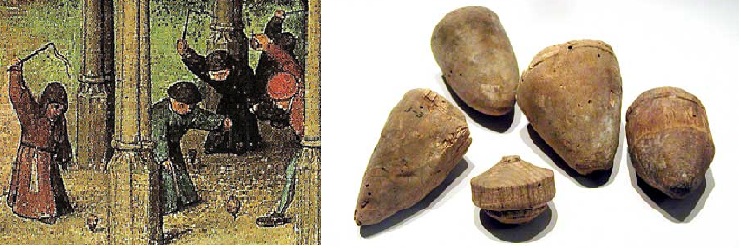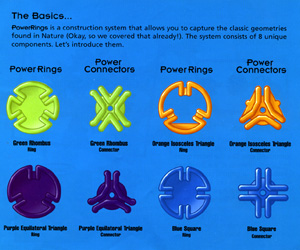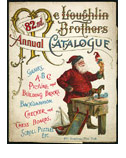Treasure Trove of Ancient Toys Found

A cache of toys from the 16th and/or 17th century were recently
discovered in a boarded-up stairwell at a parish church in England.
Archivists at the Harborough Museum dated the collection to the late
Tudor and early Stuart era (1570-1630). The hoard was comprised of
“street toys,” including balls, spinning tops, whistles, and
knucklebones (early game pieces).
This discovery provides a fascinating glimpse at childhood over 500
years ago, especially as it compares to our modern playthings. Learn
more about these toys (and see the wonderful photos) at
Irish Archaeology blog.
National Building Museum Exhibit Explores the History of Toys
Fans of building and construction toys should make sure to visit the National Building Museum in Washington, DC through Nov. 2013. Read more about the exhibit here: Lessons From the Nation’s Biggest Architectural Toy Collection

The History of LEGO
Ever wonder how LEGO® got its start? Here’s a wonderful animated film with the detailed early history of the Danish toymaker. Of course, this is just the beginning of the tale, and doesn’t explain how LEGO made inroads into the US market when the Chicago-based EL-GO (subsidiary of the Halsam Products company) was already making their American Plastic Bricks. That’s another story!
Power Rings Become Wendy’s Smart Links Kids Meal Toy
 I
recently bought my daughter a Wendy’s Kids Meal and was pleasantly
surprised to see a quality construction toy inside instead of the usual
movie tie-in. I also recognized the toy from my meeting with the
inventor while exhibiting at a late 90’s Toy Fair.
I
recently bought my daughter a Wendy’s Kids Meal and was pleasantly
surprised to see a quality construction toy inside instead of the usual
movie tie-in. I also recognized the toy from my meeting with the
inventor while exhibiting at a late 90’s Toy Fair.
These Wendy’s Smart Links were then known as PowerRings by Fun Source of Irvine, CA, but now reborn as a shiny new burger toy. PowerRings sets came in three sizes: 84 pieces, 196 pieces, and 384 pieces (SKU 1203 UPC 631477012038).
I pulled the 384 piece set from our archive and recalled meeting the South American inventor. According to the USPTO trademark database, “PowerRings Nature’s Building Blocks” was registered by an Argentinian, Ernesto D Gyurec in 1994 (and cancelled in 2002). The Fun Source company also appears to be defunct, although USPTO shows the Fun Source mark filed in 1996 (and cancelled 2005) by Strottman International, Inc., a well-regarded provider of kids meal premiums and other promotional products.
The Smart Links package contained 11 connectors (plus a paper insert to suggest imaginative play uses) which are almost identical to the PowerRings triangle, square, rhombus pieces … only slightly larger. Given the number of posts about the Smart Links elsewhere online (and their listing on Amazon.com and eBay), I’d say these toys are making a lot of kids happy. It’s too bad they were not successful as a stand-alone brand but burger toys are among the best ways to profit in the toy business and often become collectible.
A History of American Toys
 Toys
have a universal appeal. Everyone has a favorite toy from their
childhood. Beyond nostalgia or collector research, the history of toys
is the history of our civilization. Toymakers from Germany and
England brought European designs to America. The tradition of fathers
and grandfathers making toys for their families was changing as the
population moved to the larger cities. More elaborate toys could be
bought with higher urban wages, and soon most toys were store-bought
and it was the marketers who designed toys.
Toys
have a universal appeal. Everyone has a favorite toy from their
childhood. Beyond nostalgia or collector research, the history of toys
is the history of our civilization. Toymakers from Germany and
England brought European designs to America. The tradition of fathers
and grandfathers making toys for their families was changing as the
population moved to the larger cities. More elaborate toys could be
bought with higher urban wages, and soon most toys were store-bought
and it was the marketers who designed toys.
Preserving the history of these playthings may help sociologists and cultural anthropologists, but it’s fascinating to anyone who remebers a special toy received for a birthday or holiday.
So, in that spirit, we offer here an assorted history of American playthings.


